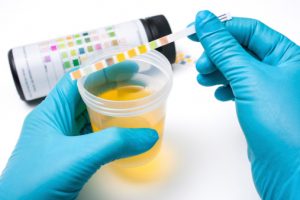
A yeast infection can affect many different parts of the body, vagina included. Symptoms of a yeast infection include itching and burning of the vagina, redness and swelling that is painful to touch, painful urination and vagina discharge.
Although the two have their differences, they also share many noted similarities, which are important to help distinguish them from each other.
UTI vs. yeast infection: Differences and similarities
Below is a chart which outlines the differences and similarities between urinary tract infections and yeast infections.
| Urinary tract infection | Yeast infection | |
| Description | Infection found in any part of the urinary tract system | Can affect any part of the body including mouth, vagina, skin and bloodstream |
| Casual agent | Mainly E. coli but other bacteria and fungus can cause a UTI | Fungus called Candida albicans |
| Risk factors | Not peeing after sex, using a douche, using a diaphragm as birth control, diabetes, enlarged prostate, urinary tract abnormalities (more so in men), the use of a catheter, urinary surgery | Immunosuppressive drugs, chemotherapy, diabetes, oral contraceptives, use of douches or perfumed feminine hygiene products, sex with an infected person |
| Symptoms | Urgency to urinate, painful urination, expelling small amounts of urine, pain in the lower abdomen, and urine of a cloudy color and unpleasant smell | Itching and burning of the vagina, painful to touch the area with redness and swelling, painful urination and vagina discharge |
| Medications | Antibiotics | Antifungal drugs |
Who can get a UTI and yeast infection?
Individuals with a higher risk of developing a yeast infection are:
- Those with weak or underdeveloped immune systems
- Cancer patients post-chemotherapy
- Individuals who have had transplants
- AIDS patients
- Pregnant women
- Those using oral contraceptives
- Diabetics
- Those with a diet high in simple carbohydrates
- Hormone replacement therapy patients
- Those who wear wet swimwear for long periods of time
Urinary tract infection after yeast infection
It is possible to develop a urinary tract infection after a yeast infection. Although rare, fungus can cause a UTI as it moves to the bladder. When both conditions are present at the same time symptoms can be present from both conditions, causing pain, burning sensations, discharge and difficulty urinating.
Another reason why a UTI may follow a yeast infection is due to the medication taken to treat the yeast infection. Therefore, even though the medications can help one condition, they can increase the risk of the other.
How to prevent simultaneous UTI and yeast infections
- Drink plenty of fluids including organic cranberry juice – the sugar variety makes a UTI worse.
- Consume foods with natural probiotics like yogurt.
- Avoid wearing tight underwear or tight jeans.
- Minimize your consumption of sugar as it feeds bacteria and fungus.
- Eat a well-balanced diet and exercise regularly.
- Avoid douching or using scented feminine products.
- Always pee after sexual intercourse.